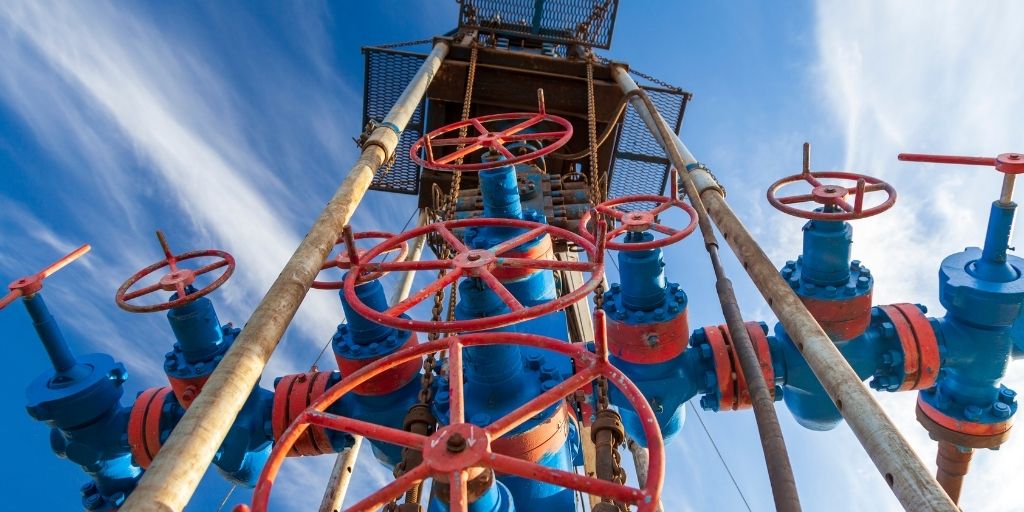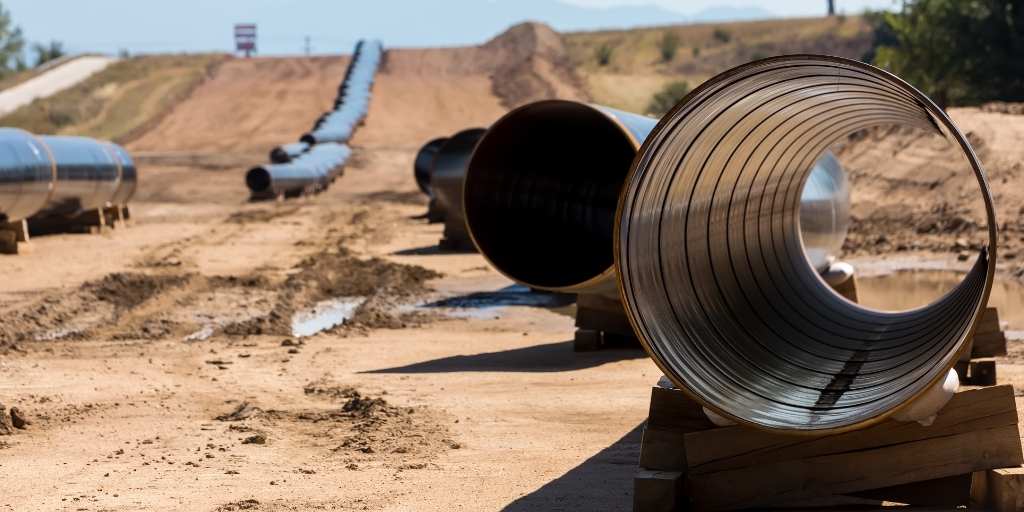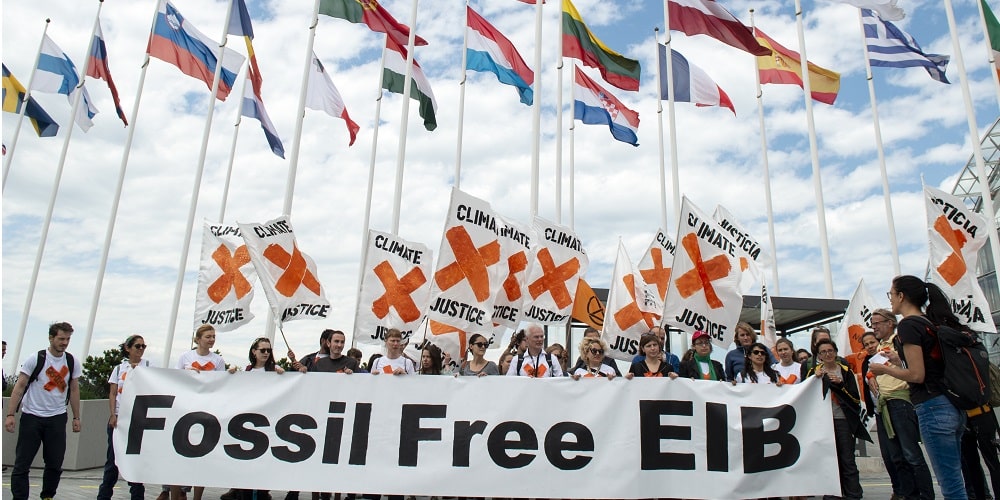Fossil gas
Fossil gas is the new coal. Although often labelled ‘natural,’ fossil gas is a major driver of the climate crisis. There is no more room for new investments in fossil gas projects if we are to avert the worst impacts of the climate crisis and set a path towards decarbonisation.

Stay informed
We closely follow international public finance and bring critical updates from the ground.
Key facts
- Methane is a greenhouse gas 86 times more potent than carbon dioxide over a 20 years period.
- Even after the 2015 Paris Agreement financial institutions have been pumping billions into fossil gas projects.
- The European Investment Bank committed to stop financing fossil fuels, gas included, from the end of 2021. It remains the exception among international financial institutions.
- In 2018-2020, gas made up over 75% of multilateral development banks’ known fossil fuels investments.
- In May 2021 the International Energy Agency warned there is no more room for new investments in fossil gas if the world is to limit global warming to 1.5 degrees.
Key issues
- Fossil gas is a potent greenhouse gas emitted throughout the supply chain, not only when burnt for energy production. Major international bodies warn fossil gas must be curtailed to slow the climate crisis.
- The fossil gas industry is plagued with corruption, and gas imports create reliance on authoritarian regimes.
- Despite the myriad problems with this fossil fuel, international financial institutions keep pouring billions in public money into gas projects and companies.
Background
Fossil gas is part of the problem, not the solution
Even though scientific evidence shows fossil gas is a significant driver of global warming, countries and financial institutions still consider fossil gas as a part of the solution in addressing climate change as a so-called bridge fuel.
In 2018 the Intergovernmental Panel on Climate Change (IPCC) pleaded for a quick reduction of emissions globally and a rapid switch to carbon-free energy systems to to prevent the planet from warming by more than 1.5 degrees above pre-industrial levels.
Fossil gas releases dangerous levels of greenhouse gas emissions – not just due to the CO2 emissions during combustion but also because of the methane emissions that occur in the supply chain, from extraction to distribution. These emissions are heavily unreported and have yet to be addressed by regulators and industry.
Methane is a greenhouse gas that is, in the short period of twenty years, 86 times more potent than carbon dioxide and has already driven more than a quarter of global warming to date.
If we are to slow climate change, methane is the strongest lever and reining its emissions would complement necessary measures to reduce carbon dioxide emissions.
A May 2021 report from the International Energy Agency report rightfully dismissed the idea of fossil gas as a transition fuel. It concluded that new investments in fossil fuels extraction must end and a radical reduction in fossil fuels, including gas, is needed over the next decade if we are to reach the Paris Agreement’s aim of limiting global warming to below 1.5°C.
Investing now in fossil gas would be the nail in the coffin of climate change. Such investments would delay the inevitable energy transformation, making it even costlier and more cumbersome in the next decades. Other solutions that are both economically and technologically feasible already exist and can be implemented.

LATEST PUBLICATION
Billions of EU recovery money to support fossil fuels
This briefing analyses plans for gas investments in the recovery plans of eight central and eastern European countries (Bulgaria, the Czech Republic, Estonia, Hungary, Latvia, Poland, Romania and Slovakia). It reveals that most contain gas investments, such as gas boilers (the Czech Republic, Slovakia and Poland); a gas pipeline (Bulgaria); gas-based district heating (the Czech Republic); gas-based transport (the Czech Republic); and the possible development of fossil fuel-based hydrogen (Bulgaria, Poland and Romania). Such proposals in favour of expanding the role of gas in the EU do not comply with the objectives of the European Green Deal, nor with the International Energy Agency’s recent call for the immediate end to financing fossil fuel projects, and the EU should not use recovery funds to finance these measures.

Fossil gas is a dirty business
The issues with fossil gas are not limited to its wrecking effects on climate change.
The fossil gas industry’s business model, through its practices, suggest that the continued profitability of these companies is achieved in significant part through bribery and other corruption. These same companies often play a central role in planning, assessing and projecting regions’ future energy needs in a way that primarily serves their own interests. Continued interference by oil and gas companies has also weakened institutions and policies put in place to mitigate climate change.
The remaining gas reserves are mostly concentrated in the Persian Gulf, Central Asia and Russia. This means that gas importing countries, including the EU which is heavily reliant on gas imports, are dependent on undemocratic and politically unstable regimes, with a proven track record of human right abuses.
Some of the areas where sizable fossil gas investments are planned, such as southeastern Europe and Central Asia, are among those most vulnerable to climate change. If these countries are planning to address and adapt to climate change, those fossil gas projects will become stranded assets in the next decades, well before the end of their financial life, thus leaving those countries once again far behind and increasing the costs of their inevitable transformation of energy systems.

Financial institutions pour billions into fossil gas
Financial institutions are struggling to kick the fossil fuel habit. Since the 2015 Paris Agreement, the public financial institutions have been supporting fossil fuels companies with billions of euros.
The European Investment Bank (EIB) was the first multilateral development bank that recognized it was time to stop financing gas. Following a strong campaign by an international coalition of NGOs, the EIB agreed on a new energy lending policy that stops financing fossil fuel projects from the end of 2021. But other multilateral development banks (MDBs) still need to follow suit.
The European Bank for Reconstruction and Development (EBRD) has clear mission statements on supporting the transition towards clean energy. Yet, several Bankwatch reports showed that the Bank’s financial support for fossil fuels remained steady throughout 2010-2019, the warmest decade on record.
In the early 2000s the EBRD was considering investing in the USD 20 billion Sakhalin-2 oil and gas development in the pristine area of Sakhalin Island, Russia. But eventually, in 2007 the Bank decided not to engage, in part due to the protest campaign of local indigenous communities and international NGOs that contended the project would have adverse impacts on Sakhalin’s people and environment.
European MDBs’ latest fossil fuels adventure was the Southern Gas Corridor, a system of mega-pipelines to bring fossil gas from Azerbaijan to Europe. This massive project has simultaneously been boosting Azerbaijan’s dictatorial regime and causing upheaval in local communities along the pipelines’ routes in Turkey, Greece, Albania and Italy.
The pipeline project received unprecedented financial support from both the EBRD and the EIB. In addition to earlier EBRD investments in the Southern Gas Corridor, in the period 2014-2018 the EBRD extended over USD 450 million to the Azerbaijan gas field (Shah Deniz II) and more than USD 1 billion into the Trans Adriatic Pipeline (TAP) and the Trans Anatolian Pipeline (TANAP).
New investments into fossil gas will lock economies into the current system of fossil fuels dependency and will have a detrimental effect on the much-needed transformation of energy systems.
Latest news
EBRD approves EUR 98.6 loan for disputed fossil gas mega pipeline in North Macedonia
Press release | 25 April, 2024The European Bank for Reconstruction and Development (EBRD) yesterday approved a EUR 98.6 million loan for a fossil gas pipeline that would allow North Macedonia to increase its gas consumption by three to six times compared to 2021, its highest-consuming year so far. (1)
Read moreNGOs request investigation into EBRD loan for North Macedonia mega gas pipeline
Press release | 25 March, 2024Environmental watchdogs CEE Bankwatch Network and Eko-svest have today asked the European Bank for Reconstruction and Development’s (EBRD) redress mechanism to investigate a planned loan for a major new fossil gas pipeline from Greece to North Macedonia.
Read moreBar’s battle: Montenegrin town rising against LNG project
Blog entry | 5 March, 2024Plans to build a fossil gas import terminal on Montenegro’s coast, with backing from the European Commission, endanger the country’s fossil fuel phaseout. Growing local opposition to the project also underlines poor public participation in the process.
Read moreRelated publications
Cutting off the pipeline from REPowerEU to the fossil gas industry
Briefing | 27 July, 2023 | Download PDFIn May 2022, the European Commission, in response to the energy crisis, launched the REPowerEU plan – a set of measures aimed at ending the EU’s dependence on Russian fossil fuel imports by 2027. The plan emphasises the diversification of gas and oil supply sources, the replacement of fossil fuels with renewable energy sources by accelerating Europe’s clean energy transition, and the reduction of energy consumption, primarily gas, in the EU. Yet despite its ambitious scope, the plan excessively prioritises the interests of the fossil fuel industry.
Energy insecurity: EU funds for fossil gas in Poland and Romania contradict climate goals
Report | 6 June, 2023 | Download PDFThis report reveals how much EU public money has been channelled toward the expansion of fossil gas infrastructure in Poland and Romania since 2014 as well as what plans these two countries have for using various EU funding sources to finance additional fossil gas projects in coming years.
LNG rush threatens Baltic energy transition: why new LNG infrastructure is a false solution for energy security in the Baltics
Briefing | 14 March, 2023 | Download PDFAs a result of Russia’s war in Ukraine, the Baltic states and Finland, which had relied on Russia for fossil gas imports, now lack sufficient alternative infrastructure to cover regional demand. The main efforts to diversify gas sources and reduce regi



